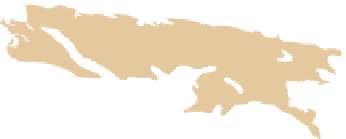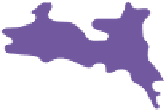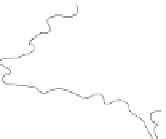Geography Reference
In-Depth Information
commonalities are more defi nite and their origin is more
recent. Subfamilies consist of individual languages, whose
spatial extent is smaller, and every individual language has
its dialects, whose territorial extent is smaller still.
ilies. So when you study Figure 6.8, be aware that this is
only one depiction of the world's geography of languages
today. This map shows the distribution of some 20 lan-
guage families, among which the Indo-European lan-
guage family has the widest distribution and claims the
largest number of speakers. What you see here, of course,
results from a combination of contiguous as well as relo-
cation diffusion: Indo-European languages spread from
a western source in all directions into Eurasia, but colo-
nialism also transplanted Indo-European languages to the
Americas, Africa, and Australia.
Even when it comes to individual languages, com-
plicated issues arise. English is the most widely spoken
Defi nition and Debate
Although language families and subfamilies seem to be a
logical way to classify languages, the classifi cation of lan-
guages is subject to intense debate. Defi ning a language
family is a daunting challenge: some linguists argue that
there are not just a few, but many dozens of language fam-
Arctic Circle
60°
60°
ATLANTIC
OCEAN
40°
40°
PACIFIC
Tropic of Cancer
20°
OCEAN
INDIAN
Equator
0°
OCEAN
ATLANTIC
20°
20°
20°
20°
20°
20°
Tropic of Capricorn
OCEAN
40°
40°
40°
0°
20°
40°
60°
100°
120°
140°
160°
60°
60°
60°
60°
SOUTHERN
OCEAN
Antarctic Circle






































































































































































































































































































































































































































































































































































































































































































